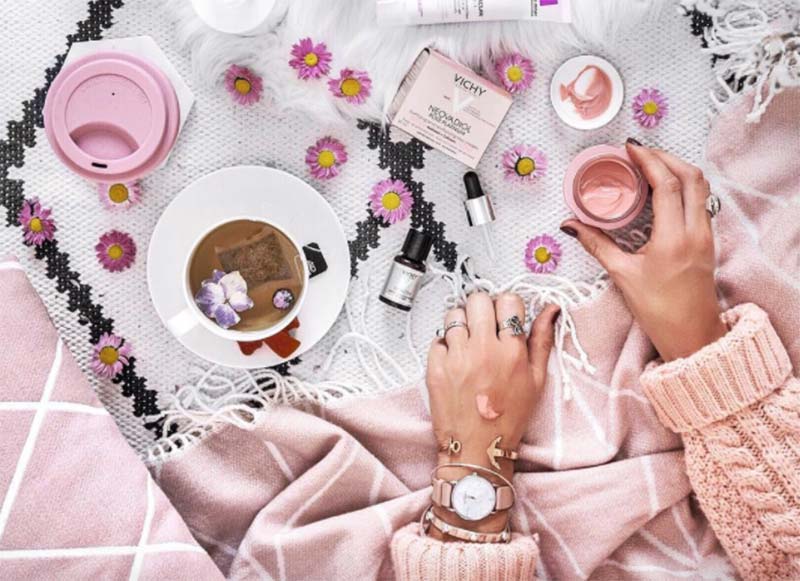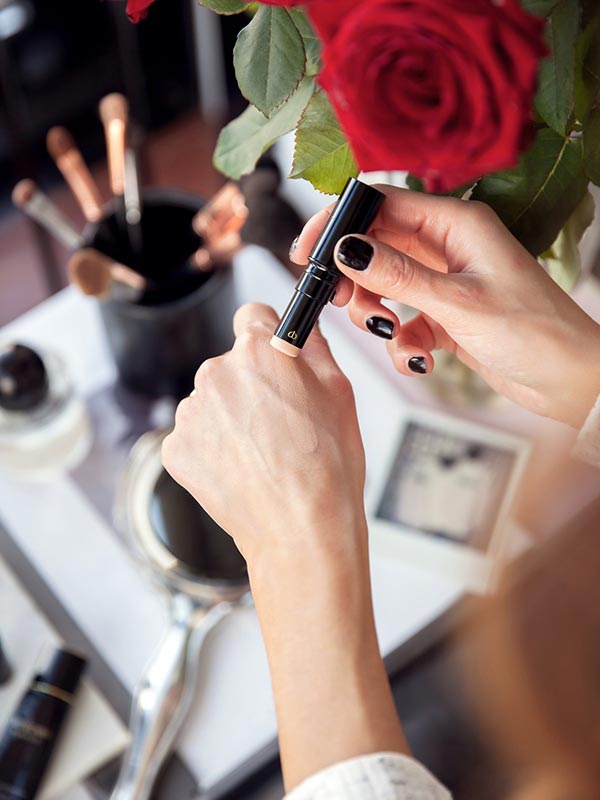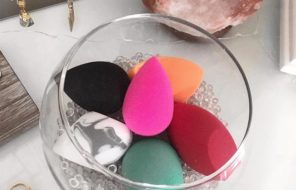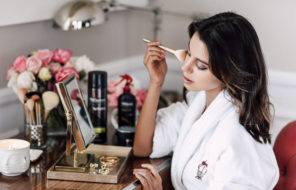Makeup concealers are that small, simple step to creating the perfect canvas for your makeup. However, you need to figure out which type of concealer to choose to achieve the best results. In this article, we’ll explain what kind of concealers there are and make it easy for you to choose the right one for you, based on your skin type, skin tone, and unique concerns.
In this article:
- Makeup Concealer Types
- How to Choose Concealer for Your Skin Type
- How to Choose Concealer for Your Skin Tone
- How to Choose a Concealer Shade for Unique Needs
Makeup Concealer Types
Concealers come in different textures to target every skin type and concern, and you should choose one accordingly.
Cream Concealers
Cream concealers come either in the form of sticks, or pressed into a compact. They have a thick consistency, and tend to provide the highest coverage. Once applied, cream concealers look neither too dry nor too oily on the skin, and would work for most skin types.
Cream to Powder/ Mattifying Concealers
These look the same as normal cream foundations, and come in the same forms. However, they tend to include less emollient ingredients, so once they dry down they are very matte and help to control oil. They tend to have excellent longevity.
These types of concealers are best for oily skin, and should generally not be used around the eyes. Some liquid concealers can also have this mattifying effect.
Liquid Cocnealers
Liquid concealers are lighter and more liquidy than cream foundations. They usually come in small jars with an applicator, or in tubes. Their coverage is usually sheerer and dewier than that of a cream concealer (although some mattifying formulas do exist). They are best for dry skin, and for concealing under the eyes.
Powder Concealers
Much like powder foundations, powder concealers are simply powders with a lot of coverage. They are not a very traditional part of a makeup routine, but they can work really well for some people, especially those who try to avoid cream and liquid makeup at all cost.
They generally don’t have the same high coverage as a more traditional concealer. These kinds of concealers are best for those with oily skin.
Brightening Concealers
Brightening concealers are especially popular for under the eyes and around the nose and mouth. They can also double as cream highlighters.
These concealers, which often come in the form of a liquid, will have a bit of reflective pigment in them to diffuse imperfections and reflect light, making the area to which they are applied seem brighter. These concealers are great for filling in sunken areas of the face and deep wrinkles, because they make the area appear plumper.
However, brightening concealers must be used carefully since overapplied they can cause flashback in photos and can look overly light.
Color-Correcting Concealers
Color-correcting concealers can come in any texture form. These concealers are not colored to match the skin tone, but instead are colored in unusual colors (most frequently green, yellow, peach, or lavender) in order to provide color correction.
When you have discoloration in the skin, layering the opposite color from the color wheel on top of it will cancel out the discoloration. This means that green concealers eliminate redness, yellow concealers cancel out purple tones, peaches hide the blue that is so common under the eyes, and lavender will brighten the skin and target sallowness.
Color-correcting concealers are best layered under foundation, and are a great way to provide coverage without using too much product.

How to Choose Concealer for Your Skin Type
Once you figure out your skin type and know all the types of concealers that exist there, follow the concealer tips below to choose the best one for you!
Best Concealers for Normal and Combination Skin
Those with normal and combination skin can likely benefit from all kinds of concealers. A normal cream or liquid concealer could probably work for all over the face, although they could also opt for a dewier, liquid concealer under the eyes, and a mattifying concealer for the oilier parts of the face.
Best Concealers for Oily Skin
Those with oily skin would benefit the most from a concealer with amazing staying power, since those with oily skin tend to have a harder time maintaining the longevity of their makeup. This means they would want to use either a mattifying concealer or a powder concealer.
Best Concealers for Dry Skin
Overly heavy concealers tend to emphasize dryness, as do mattifying ones. Those with dry skin should opt for nourishing liquid concealers that will keep their skin looking dewy and hydrated. The key is to use as light an amount of concealer as possible, and not to powder it too much if at all.
Best Concealers for Maturing Skin
Anyone trying to camouflage wrinkles should also stay away from overly heavy concealers. Thick, high-coverage concealers are excellent at targeting discoloration, but they will only emphasize uneven texture in the skin. Instead, opt for light, liquid concealers.
A brightening concealer applied only to the sunken, indented parts of a wrinkle will actually help reflect light and make the area seem plumper, and the wrinkles less apparent. It is also possible to find concealers with antioxidant ingredients to both camouflage and fortify the skin, also fighting premature aging.
Best Concealers for Sensitive Skin
Those with sensitive skin should always be more careful when introducing new makeup items into their routine. Concealers with shorter, simpler ingredient lists will make it easier to avoid irritation, but always start off applying sparingly and seeing how your skin responds.
Those with sensitive skin often experience redness or blotchiness, which a concealer can go a great lengths towards covering. Opt for a concealer with a creamy texture, because a mattifying concealer can drag over the skin and become irritating.
Another option is a green or yellow concealer to color correct for any redness in the skin, below the foundation.
Best Concealers for Acne-Prone Skin
Covering up acne is a delicate process. You want a concealer that won’t aggravate the breakouts, but that will still stay in place and cover them adequately. Cream concealers, whether mattifying or otherwise, tend to be the best at staying in place.
Avoid concealers with comedogenic ingredients like lanolin or refined coconut oil (mineral oil, surprisingly enough, is usually fine). There are concealers out there with acne-fighting ingredients, like salicylic acid, so you can kill two birds with one stone.
How to Choose Concealer for Your Skin Tone
Color matching a concealer is a similar process to color matching a foundation, although with concealers there actually might be reasons why you would want a concealer that is a somewhat different shade than your skin tone.
Figuring out Your Undertones
If you are in doubt, or you just need a one-size-fits-all concealer, opt for a concealer that matches your skin tone exactly. Unlike foundations, concealers are not necessarily classified based on undertones, but knowing your undertone will still make it easier for you to figure out the right concealer shade for you.
The easiest way to determine your skin tone is by looking at a place where your skin is fairly clear, like the forearm. Doing this while wearing white is best, since other colors might impact the way you perceive your skin’s coloring.
- Examine your veins. If they lean more towards blue, then you have a mostly neutral skin tone, and the rest of your skin would look mostly beige, with perhaps a touch of both pink and yellow.
- Yellow is the classic warm undertone. The veins look a little bit green, while the rest of the skin leans towards yellow.
- A cool skin tone is usually how makeup artists refer to those who have a lot of pinkness in their skin. The veins appear more purple, and their skin is usually pale, though not always.
- An olive skin tone leans a little bit towards green, and is considered either a neutral or warm skin tone. The veins appear extra green, and the rest of the skin is either a beige-olive or a yellow-olive.
- Those with darker skin often have a warm, yellow undertone, although also common is a red or orange undertone.
- Orange undertones are also common in people who tan, who might have a yellow undertone to start off with. Since the skin is usually darker, the veins are less visible, although they would lean slightly towards green or purple, depending on the balance of yellow and red.
- Lastly, and almost exclusively reserved for those with darker skin, is the blue undertone, which is simply brown skin that has a cool blue or purple tint. Lupita Nyong’o is a great example of someone with blue undertones to their skin.
Finding the Perfect Match
The key to color matching a concealer is to test it. The chances of finding a matching concealer without trying it out first are nearly impossible.
Begin by choosing two or three concealers that match your skin’s undertone. Apply them in swipes along your jawline, and blend out their edges just a little bit. Choose the color that seems to disappear into your skin best.
You might notice that one color (usually a lighter one) will blend better into your neck, while another (usually a darker color) will blend better into the face. This is because the face tends to get more sunlight, while the neck is protected, so our face tends to lean a little towards darker.
If you want a concealer specifically for brightening, or if you like to match your foundation perfectly to your neck, then opt for the slightly lighter concealer. On the other hand, if you need a concealer for concealing discoloration on the face, and you tend to prefer your foundation to match your face (or you like blending your foundation down your neck for a more tanned look), then opt for the darker concealer.
There are, of course, situations when you won’t be searching for a concealer that matches exactly.
How to Choose a Concealer Shade for Unique Needs
While the primary purpose of concealers is to conceal, hide and camouflage any skin imperfections, they are also used for other purposes as well.

Highlighting & Contouring Concealers
Concealers are excellent for cream highlighting and contouring, since they provide just enough color, and their end look is quite subtle, since they blend readily and look natural underneath powder. The concealer you choose for highlighting can have some mineral particles to reflect light, although the concealer for contouring should just be a normal concealer.
For highlighting, choose a concealer that is 3-4 shades lighter than your skin tone, while for contouring the concealer should be 3-4 shades darker. It is best if you choose concealers that have the same undertones as your skin.
Concealing under the Eyes
The under-eye area is subject to all kinds of issues, from simply being a little darker, to looking a little purple or blue. The skin around the eyes is thinner and more sensitive than other parts of the face, so some people might also experience under-eye redness. Lastly, there are some who experience puffiness under the eyes, which requires a highlight and contour approach for concealing.
- If you are dealing with blue or purple discoloration, and have a light or cool skin tone, choose a very pale peach concealer.
- Opt for a yellow concealer if you have a warm skin tone and purple circles under your eyes, as well as if your under-eye area is irritated and leaning towards red.
- An orange tone will work better to conceal purple and red if your skin is a little bit darker.
- Those with extremely pale skin might find that a lavender concealer works best for covering up their dark circles, especially if their under-eye circles are more brown than anything.
- For puffiness under the eyes you want to use a concealer that matches your skin tone perfectly. Usually there is an indentation below the eye bag, just above the cheekbone. You want to highlight that indentation with a concealer a few shades brighter than your skin tone, to make the skin appear smoother.
Concealing Skin Sensitivity, Redness, and Breakouts
You have two routes you can take with red or pink discolorations, which can be caused by various skin conditions, including rosacea and acne. One route is color correction, using a green or yellow concealer.
However, chances are using a concealer that matches your skin tone perfectly will work just as well.
Photos via @tonipino, Instagram





